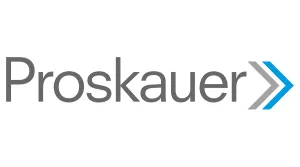- with Finance and Tax Executives
- with readers working within the Accounting & Consultancy industries
Welcome to July's edition of our UK Tax Round Up. Apart from the draft legislation and accompanying material released on 21 July as part of "L-Day" (legislation day), July was a fairly quiet month for UK tax developments. There was an interesting case heard by the First Tier Tribunal ("FTT") that concerned the purported transfer of goodwill out of a group which we have summarized below.
HMRC "L-Day" Announcements
On 21 July, HMRC issued a range of draft legislation and supporting documents for Finance Bill 2025-26. Interested parties can submit comments on the draft legislation as part of an open consultation ahead of the final legislation forming part of the next Finance Bill. The consultation period runs until 15 September.
Most of the measures have formed part of either previous consultations or are topics that formed part of the last Autumn Budget. Some of the main areas covered are as follows:
- Reform of the tax treatment of carried interest. This is the
draft legislation that has been published following the lengthy
consultation on the proposed measures published in October 2024. Click here to read our update on the
Government's response last month to the consultation ahead of
publishing the draft legislation.
- Inheritance tax ("IHT") reforms. There are two main
areas where we now have draft legislation:
- Bringing property held under a registered pension scheme, a
qualifying non-UK pension scheme or a "section 615(3)
scheme" (which can be used to provide relevant benefits as a
result of a person's death) to be treated as part of the
person's estate for IHT purposes. This will have effect from 6
April 2027; and
- Legislation to enact the proposed changes to business property
relief for IHT purposes on the value of qualifying agricultural
property and relevant business property that is comprised in an
individual's estate or in a settlement (trust). The total
amount of 100% relief on qualifying property will no longer be
unlimited but will instead be limited by the introduction of a new
maximum allowance of £1 million (with that limit to increase
in line with indexation from 6 April 2030). After that, the default
rate will be 50% instead. In addition, the rate of business
property relief reduces from 100% to 50% in all circumstances for
shares traded, but not listed, on the markets of recognized stock
exchanges such as the Alternative Investment Market (AIM). The rate
of relief also reduces from 100% to 50% for qualifying shares
listed on foreign exchanges which are not a recognized stock
exchange. These changes will generally have effect from 6 April
2026;
- Bringing property held under a registered pension scheme, a
qualifying non-UK pension scheme or a "section 615(3)
scheme" (which can be used to provide relevant benefits as a
result of a person's death) to be treated as part of the
person's estate for IHT purposes. This will have effect from 6
April 2027; and
- Measures to strengthen current legislation that targets those
who promote or enable marketed tax avoidance. These proposals are
wide-ranging and include draft legislation to make it a criminal
offence for a promoter of tax avoidance arrangements to fail to
notify the arrangements to HMRC. They would also introduce
universal stop notices (USNs) and promoter action notices (PANs) to
restrict activities of promoters and enablers of marketed tax
avoidance and those providing products or services to them. There
are also measures to restrict legal professional privilege in
limited circumstances. HMRC also published on 21 July a summary of
the responses to the consultation on this topic that had run until
18 June; and
- There are also further technical amendments proposed to the legislation governing the Multinational Top-up Tax and Domestic Top-up Tax, which were brought in as part of the UK's implementation of Pillar 2.
UK Case Law Developments
Transfer of goodwill ineffective to avoid degrouping charge
In Currys Retail Ltd v HMRC, the First-tier Tribunal (FTT) considered whether a company (CPW) leaving a group was subject to a degrouping charge under section 179 TCGA 1992 in respect of the goodwill in four businesses that it had acquired from group companies less than six years before it left the group. Section 179(3) TCGA provides for a tax charge when a company leaves a chargeable gains group owning an asset that is not a trading asset and which it acquired from another member of the group in the previous six years. In that case, the chargeable company is deemed to have disposed of and immediately reacquired the asset at market value at the time of the initial intragroup transfer.
The transaction considered in the case involved CPW entering into agreements with an unconnected company (with which it became connected a few days later) (BBUK) prior to the sale of CPW to an unconnected purchaser. It was intended to trigger a chargeable gain by reference to the current market value of the goodwill previously acquired by CPW of about £50,800,000 rather than the market value of that goodwill when CPW had acquired it over the period between 2004 and 2007 of about £107,658,000.
The terms of the relevant sale and purchase agreement (SPA) entered into between CPW and BBUK in 2008 provided for the sale of "the Goodwill and the right to carry on the Businesses" for a consideration of £50,800,000, with £50,799,000 apportioned to the Goodwill. Under a separate management services agreement between the parties, CPW was engaged to operate and manage the businesses on BBUK's behalf as its agent in return for a management charge equal to 95% of the revenues of the businesses. The management charge was subsequently reduced by agreement to 91.19% to seek to better reflect BBUK's continuing ownership of the businesses.
CPW filed its corporation tax return for 2008 on the basis that it had chargeable gains liability on the 2008 value of the goodwill of about £50,799,000. HMRC argued that CPW had not disposed of the goodwill to BBUK so that it was liable to tax on chargeable gains under section 179(3) TCGA by reference to the £107.658,000 market value of the goodwill when CPW had acquired it. That resulted in additional corporation tax of £30,144,240. The FTT held that whether or not the company continued to own the goodwill at the point when it left the group depended on if, on a realistic view of the facts, those agreements had given rise to a disposal of the goodwill in law or in equity. The FTT concluded that, viewed realistically, the agreements did not have that effect and that the company therefore still owned the goodwill when it left the group and was subject to the charge.
It was a lengthy judgement, and some of the documentary evidence was not available to the FTT. However, the FTT found that not only were the businesses not transferred to BBUK pursuant to the combined effect of the relevant agreements but also, after those agreements became effective, it was CPW which continued to carry on the businesses as principal rather than the businesses being carried on by BBUK as principal through the agency of CPW. The FTT also ruled that the asset which BBUK acquired in return for its payment of £50,800,000 was neither the goodwill nor the businesses but rather the right to receive payments equal to a fixed percentage of the future gross revenues of the businesses. Accordingly, the FTT upheld HMRC's assessment of corporation tax on CPW under section 179(3) TCGA.
HMRC argued that the approach that the FTT must take is to construe the legislation (section 179(3) TCGA) purposively and determine whether the facts, viewed realistically, met the requirements for the legislation. Here, whether CPW still "owned" the goodwill when it was sold to the unconnected purchaser. It was agreed that this, effectively, rested in whether CPW had "disposed of" the goodwill to BBUK for the purposes of corporation tax on chargeable gains. In this regard, the FTT considered two main questions. The first was whether it was possible to dispose of the goodwill of a business without disposing of the business as long as following the disposal of the goodwill the business was carried on for the benefit of the person to whom the goodwill was transferred. This is referred to as the question of goodwill "in gross". The FTT held that it was not possible to dispose of goodwill other than as part of the disposal of the business to which it attaches and that this was the longstanding conclusion of the courts. Accordingly, CPW could only have disposed of the goodwill to BBUK If it has also disposed of the business.
The FTT then considered the terms of the arrangement between CPW and BBUK in the round, including the purported sale of the goodwill and the terms of CPW's continuing role in operating the businesses and receiving consideration equal to 91.19% of the revenue of the businesses. The FTT held that the terms of the contracts meant that CPW had no disposed of the businesses (and so not of the goodwill) and that the businesses were not, following the purported disposal and entering into the management services agreement, carried on for the benefit of BBUK (in case the FTT was wrong on the point of whether goodwill could be disposed of separately to the business to which it attached). In coming to this decision, the FTT emphasised the actual terms of the agreements and, in particular, that they did not refer to a transfer of the businesses, but only that the BBUK had the right to carry on the businesses, that the SPA did not state that there was a transfer of the assets or liabilities of the businesses (CPW claimed because CPW would continue to operate the businesses for BBUK), that BBUK was unable to dictate the overall strategy and direction of the businesses and that it was not entitled to the profits of the businesses. BBUK also had no obligation to meet the expenses of the businesses and CPW remained responsible for those expenses and entitled to the profits (subject only to its obligation to pay BBUK the stated percentage of gross revenues). The businesses continued to be integrated structurally with CPW's other operations. In addition, the transfer was not notified to employees and others.
The judgement is interesting in the emphasis that HMRC put on
taking a very broad approach to the "realistic view" of
the facts and that, while the FTT recognised that as the correct
approach, the actual decision seems to rest more on the specific
terms of the SPA under which the goodwill was supposedly
transferred and that those terms did not explicitly state that
there was a transfer of the businesses or provide for the standard
consequences that one would expect to see in a business transfer
agreement, which would include transferring the assets and certain
liabilities of the business. So, although HMRC's approach to a
realistic view of the facts might have been directed at the
structured nature of the transaction between
CPW and BBUK, the FTT might have come to a different conclusion on
the application of section 179(3) TCGA had the SPA and the master
services agreement better reflected the terms that one would expect
to see in a business transfer arrangement coupled with an
arrangement for the transferor to continue to operate the business
as agent for the transferee.
The content of this article is intended to provide a general guide to the subject matter. Specialist advice should be sought about your specific circumstances.







